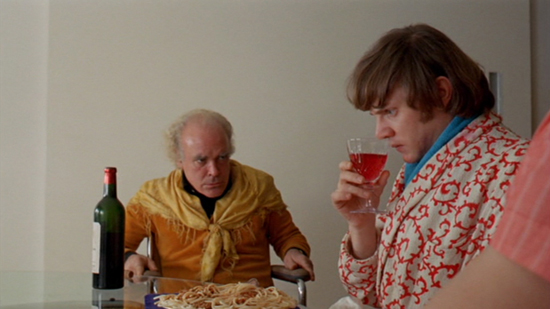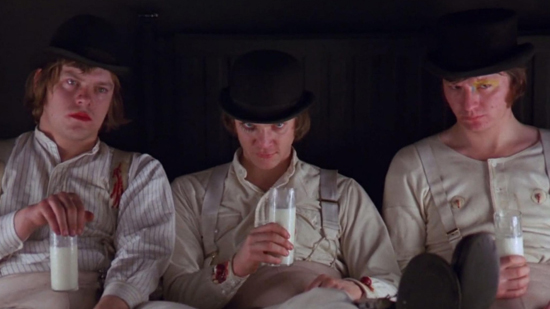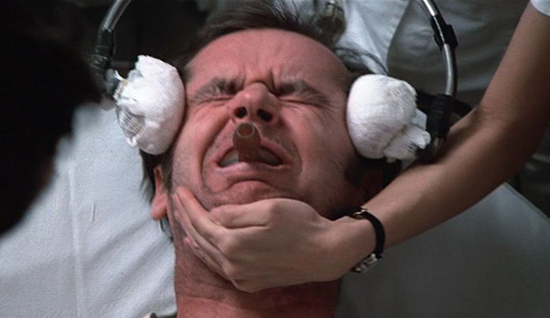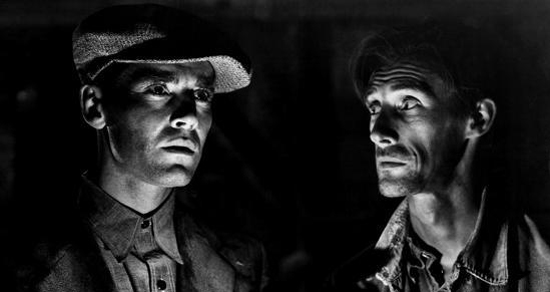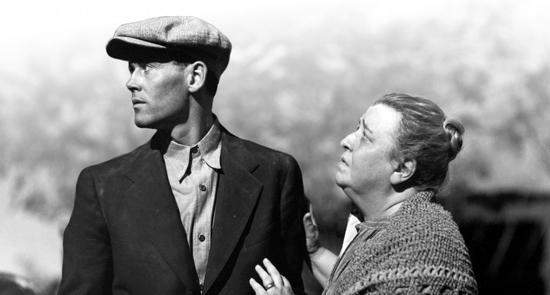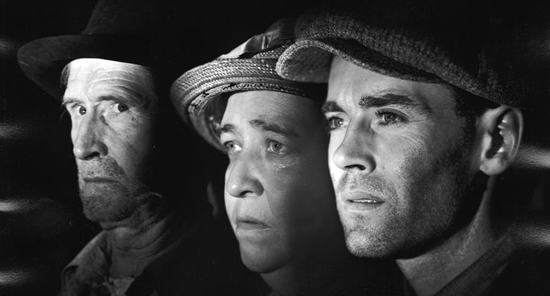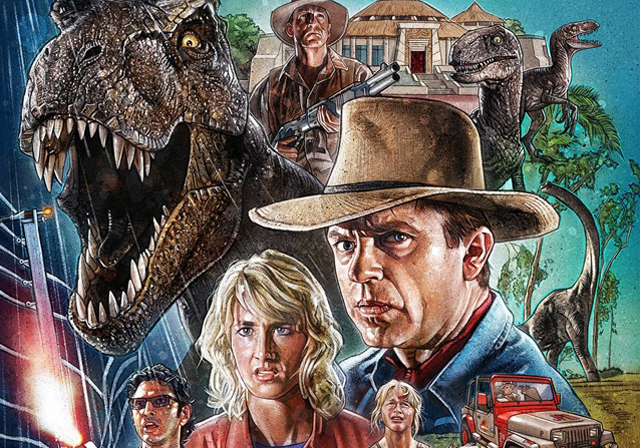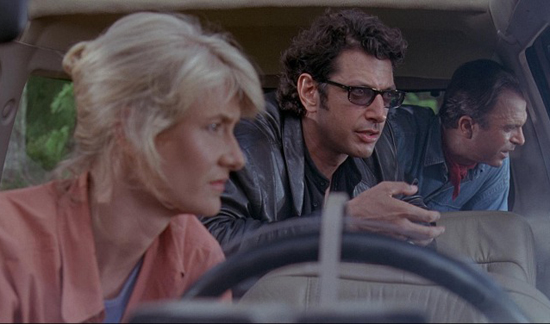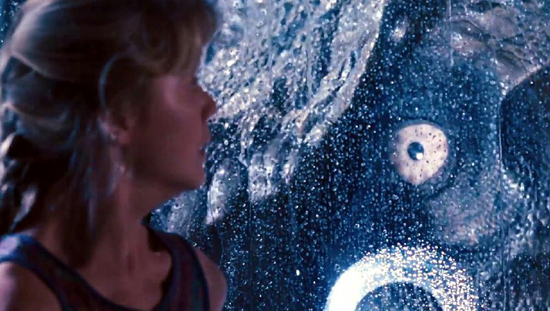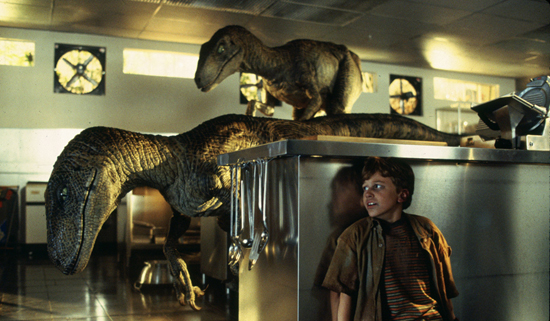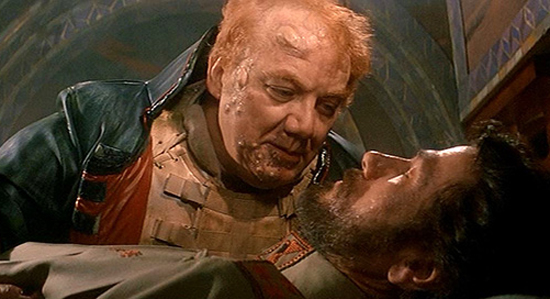
Neil Gaiman has emerged as one of the most unique voices in modern literature over the last couple of decades. The British author has particularly had a hand in creating a renewed interest in fantasy literature, especially when it comes to darker themed fantasy. Gaiman himself cites the likes of J.R.R. Tolkein and Lewis Carroll as inspirations in his writing, and it’s interesting how he has carved out his own voice the literary world. Not only has he made a name for himself with the written word, but he has also become a celebrated writer in the field of comic books as well. The common theme that seems to appear in most of his writing is the idea of mythical and celestial beings existing in a modern world setting. It’s a theme that pops up in most of his works. His first novel, Good Omens, involved a familial relationship between a literal angel and a demon. American Gods told a story about the gods of the old world making their way through life in the New World of modern day America. Even his run of Sandman comics for DC involved the clashing of heaven and hell on earth. But even with all of the literal biblical sized elements that he throws into his stories, his writing is also focused on the humanity that often comes into conflict with these world shaping elements. Perhaps the best illustration of his ability to ground the fantastical in a contemporary, ordinary world is found in what was his first foray into children’s literature. Of course, when we say children’s literature from the pen of Neil Gaiman, it’s still in the genre of horror fantasy. His version of a story appropriate for young readers is within the same context of the works of the Brothers Grimm being appropriate for young readers. He softens his edges, but still creates for his readers a spooky and at times also disturbing atmosphere. And that’s the story we find in his 2002 novella, Coraline.
Coraline tells the story of a young girl who finds that her new home is not what it seems. The titular heroine is at odds with her parents after their move, and wishes for an escape. She finds that escape when she finds a door in the back of the house to another house identical to her own, only livelier and more welcoming. There she finds a woman identical to her mother, only with buttons sewn onto her face instead of eyes. This “Other Mother” is generous and attentive in a way that her own Mother has not been, and Coraline grows more fond of this “Other World.” As he seems more inclined to stay in Other World, she soon realizes there is a catch; to live there, she must sew buttons into her own eyes just like the other residents there. She of course refuses, and begins to see the Other Mother for who she truly is, a deceptive creature called the Beldam, who begins to grow more grotesque after the pleasing facade has fallen. Coraline manages to return to the real world, but her family is nowhere to be found. It is here that Coraline realizes the cost of taking her parents love for granted, and favoring her own comfort and happiness over the needs of the family as a whole. From this point, she determines to find her real family, and in the process, she learns of the horrible history that her new home has had with the Beldam lurking behind the hidden door. Overall, it is a spooky sort of haunted house story that Neil Gaiman manages to craft that certainly is provocative without ever being gory. You can definitely see the Lewis Carroll influence, as the Other World is a twisted take on the concept of Wonderland, where it takes on a sinister character after making too much sense instead of nonsense. When the novella was first published, it was instantly successful, earning Gaiman among other things a Hugo Award. A couple years later, Gaiman would oversee a graphic novel adaptation, which was published in 2008. The graphic novel gave readers the first visual representation of Gaiman’s imaginative world, and as it turned out, it would be just an appetizer as Coraline was about to make the jump to the big screen.

“How can you walk away from something and then come towards it?”
Enter Laika Animation studios. Laika had just emerged after a rebranding of the old Will Vinton Studios, which had been the stop motion workshop that had been animating shorts and commercials since the 1970’s, famous for the California Raisins among other things. Due to growing health issues, Will Vinton was looking to pass his Portland, Oregon studio off to new management that he hoped would continue the stop motion tradition after he was gone. A former animator who work at his studio was Travis Knight, who just so happened to be the son of Nike founder Phil Knight, and he managed to convince him father to invest in Vinton’s ailing studio. Vinton retired in 2005 and shortly after Travis Knight took over management of the studio, re-branding it Laika Animation. Knight wasted no time in turbo-charging the output of his new studio, quickly looking for a project to develop into a feature film that he hoped would put the studio on the map. Given that stop motion already has this other-worldly feel to it, so a story like Neil Gaiman’s Coraline was a match made in heaven for Laika. The story had all the elements that was ideal for the studio, a spooky story that could still appeal to all audiences and allow for them to flex their arms creatively, especially with the construction of the “Other World.” And to also show that Laika was serious about getting the tone of the book right, they sought out some veteran help by hiring Henry Selick to direct the feature. Selick, of course, famously directed the classic stop motion feature, The Nightmare Before Christmas (1993) for Disney and producer Tim Burton. The success of that film led to a follow-up adaptation of Roald Dahl’s James and the Giant Peach (1996), but the souring of the working relationship between Selick and Burton eventually led to the former leaving their partnership in pursuit of a different creative path. This was fortuitous for Laika, as they wanted their house style to evoke the weird and imaginative sights that both Nightmare and Giant Peach both shared. Bringing Selick on board would prove to be exactly what their Coraline project needed, as it gave the film the fully realized vision that it needed.

“You probably think this world is a dream come true. But you’re wrong.”
So, what did Laika manage to do to give Coraline the cinematic treatment. Gaiman’s story already lent itself very well to the visual form as the graphic novel demonstrated. On the whole, Laika didn’t make a whole lot of changes to the story itself; it plays out pretty much as it did on the page, with some notable but not too drastic alterations. Perhaps the most noticeable difference is that Laika decided to give their setting a bit more character. Neil’s novel is set in no particular place, with only the house itself being the primary setting for the story. It’s presumed that Neil sets his story in his home country of England, as the house he describes is reminiscent of the old manor houses that dot the English countryside. Laika on the other hand gave Coraline a decidedly American setting, and in fact the studio chose it’s own back yard as the place to set this story. The movie takes place in the town of Ashland, Oregon, which is a real town nestled just north of the California state border. It’s a small cultural community known for it’s yearly Shakespearean Festival. If you’re wondering why the movie has citizens from the town reciting quotes from the Bard, that’s the reason why. It’s an interesting choice to set the story there, because while Ashland can be an inviting place, it’s also a bit cut off, being surrounded by mountains and farms. The often gloomy Oregon weather also plays well with the atmosphere of the story. But what is interesting is that Laika also makes the “real world” in their movie stylized as well. Both the realms of reality and fantasy have the same off-kilter look; the big difference is the way that the different realms are colored. Coraline’s reality is muted and washed out, while “Other World,” is bright and colorful. This is an effective way to differentiate the two, with the more sinister side appearing initially to be the more appealing of the two. The effect is still the same with regards to the story, which works to Laika’s advantage. They are able to make even the real world visually interesting, without sacrificing the impact of seeing the “Other World,” and in the end it gives the movie as a whole a vibrancy of style.
The characters for the most part are pretty similar to their literary counterparts. One change that is made to the characterization is that the movie does not carry over Gaiman’s use of the first person narration from Coraline herself. Coraline is still the main character here, but we are experiencing the story with her, rather than having her recount it for us. Apart from that, she is the same character described in the book; spunky and free spirited, but still flawed due to her abrasiveness, especially when she shows it to her parents. The story is a coming of age tale and through it we see Coraline grow into a more responsible character, not letting personal interests and desires get in the way of doing what’s right. The animators definitely made her distinct, with the matching of her yellow rain coat and blue dyed hair creating an instantly iconic profile. She’s also given great personality by a then teenage Dakota Fanning in her vocal performance. Her work in the film is also complimented by a surprisingly complex vocal performance by Teri Hatcher as both Coraline’s mom and as “Other Mother” aka the Beldam. Hatcher remarkably plays her role with incredible range, showcasing so many different variations on the same character; being warm and inviting at one point and then terrifyingly shrill by the end. The Beldam is also a character where the animators got to be more creative in their designs. Neil Gaiman described the creature as looking just like Coraline’s mother, except taller, thinner and paler, and obviously with those unsightly button eyes. In the film, the Beldam goes through multiple transformations, at times being similar to what Gaiman described, but done one step further. By the end, the Beldam is almost insect like, with metal needles as spider legs. It makes for a truly terrifying villain for the story, and one that very much could only be fully realized in this style of animation. All of the other characters are much like their counterparts in the book, with the animators using their creativity to give them all exaggerated bodies. Coraline’s neighbors in particular are fun caricatured designs, like her downstairs neighbors Miss Spink and Miss Forcible having extreme “curves”, and her upstairs neighbor Mr. Bobinsky having blue skin. The one character that seems to be the most direct pull is The Cat, who in the movie speaks with the distinct voice of Keith David. He’s a character that definitely feels like he jumped right off the page, and he’s very much present in much of the promotions of the movie, including appearing as part of the logo.

“Even if you win, she’ll never let you go.”
There is one character that was original to the movie that made a significant change to the story. The film added another neighbor named Wybie to the plot; a boy around Coraline’s age that doesn’t live in the same house like the rest of Coraline’s neighbors but nevertheless still hangs around the property. He starts off as a bit of a nuisance to Coraline, being a bit of a weirdo that talks too much. But, when Coraline begins to investigate deeper into the mystery of the house she lives in, she learns that Wybie’s family has a dark past related to it. Wybie tells her that his grandmother lost a sister when they used to live in the same house. The sister disappeared one day and was never seen again. It’s only after Coraline challenges the “Other Mother’s” authority that she comes face to face with the truth. The house is haunted by the spirits of children, all of whom were captured and eaten by the Beldam, who lured them into the “Other World” the same way that Coraline was. This revelation is found in the original book, but the fact that one of the ghost children is related to Coraline’s new friend in the real world gives the revelation a much more personal angle. It hits home a lot more that Coraline knows what fate she’s about to face after becoming aware of Wybie’s great aunt’s own grisly fate. It helps to elevate the threat of the Beldam in the story and it gives Coraline a bit more purpose in the story. Not only is she going to face off against the Beldam for her own survival, but she also is doing it to seek justice for those who were not able to escape. It definitely gives Coraline a bit more urgency in her story, showing that she is thinking through her ordeal as she presses forward. The inclusion of Wybie in the story also gives Coraline a character that she can relate with on a personable level. As she finds out, Wybie is the only one who believes her after she has passed into a different world, with all the adults dismissing her childish “fantasies” as just that. It’s interesting that in the “Other World,” the Beldam has also created an “Other Wybie” whose mouth has been sewn shut. Perhaps the fact that “Other Mother” went to the extra effort to keep “Other Wybie” silent is what convinces Coraline to take the words of the real one more seriously, and that’s an interesting new wrinkle added into the plot of the film.
What the movie and book both effectively realize is the theme of confronting fears head on as a positive sign of maturity. For Coraline, she appears on the surface to be a fearless pre-teen girl whose adventurous spirit leads her to explore the unknown. But all of that fearlessness to what’s in front of her also puts a wedge between her and her parents. Her fear is internalized; she is afraid to open up to her parents and tell them she loves them, because that’s a sign of immaturity in her eyes. There’s a degree to that in every rebellious youth, but the movie and the book Coraline confronts this theme in a very vivid way. Her fear manifests clearly when the Beldam has taken her parents away. She realizes her greatest fear is being alone, and that because of her actions, she has ended up isolating herself, making her own fear come true. It’s a mature theme to explore in a coming of age story like this, and it’s interesting to see how Coraline comes to the realization that having everything come to her on her terms is actually what has made her world come apart. Once the Beldam shows her true form, and the “Other World” begins to slowly crumble apart, we see all the old things that made the “Other World” so inviting before suddenly become the things of nightmares. In her quest to save her parents, all of the different encounters with the “Other” residents of the house become twisted and nightmarish moments in the final act of the film. And the worst is saved for last when she has to face the Beldam face to ugly face, all the more disturbing when the creature is still faintly like her mother. Another interesting element that was added for the film was the idea of the Beldam luring her victims with dolls that look just like them found in the real world. What it tells us is that the Beldam seems to sense the insecurity that a child like Coraline possesses and uses the dolls as a plant to coax out the curiosity of each child once they arrive at the house. Neil Gaiman’s story certainly deals with all these themes, and thanks to Henry Selick’s creative vision, those themes manifest is some truly eerie and at times terrifying moments on screen.

“She wants something to love, I think. Something that isn’t her. Or, maybe she’d just love something to eat.”
Coraline premiered in February of 2009, but regardless of its wintertime release, it has since become a favorite for Halloween time playlists. The film was critically well received and it had a pretty healthy box office take for a stop motion animated film. More importantly, it put Laika Animation on the map. In the 15 years since Coraline’s premiere, they have released four more features (2012’s ParaNorman, 2014’s The Boxtrolls, 2016’s Kubo and the Two Strings, and 2019’s Missing Link) with a fifth one currently slated for 2025 called Wildwood. While they have struggled to repeat the same success as Coraline, each film is still highly regarded and the studio has helped to keep the prestige of stop motion animation going. Like many other successful runs, it matters how well a studio is able to perform on it’s first go, and Laika certainly found the right story to tell with Neil Gaiman’s short modern fairy tale. The movie itself has helped to elevate the novel itself, which when it was first published was regarded as one of Gaiman’s lesser works. It was still loved, but it didn’t shine as brightly as Gaiman’s run of Sandman comics, or his novels Good Omens and American Gods. What is noteworthy though is that the movie Coraline was the first actual cinematic adaptation of one of his literary works. Since then, many of his novels have been been given adaptations, mostly for television. Both American Gods and Good Omens were faithfully adapted into shows for Starz and Amazon Prime respectively, while Netflix managed to take his vast collection of Sandman comics and turn it into a successful mini-series. And after 15 years, Coraline still holds up and is probably even more popular now than it was when it first premiered. One thing that really has helped it to stand out is the fact that it’s an animated feature that’s not afraid to be a little dark. Animation used to have a lot more darker moments than they do now, and those were the kinds of movies that have withstood the test of time. Sometimes it doesn’t hurt to make a family friendly film have that extra little bit of peril in it, even if it becomes borderline horrific, because those end up being the scenes that we remember most from childhood on. Coraline has the perfect mix of all that; whimsy, humor, creepy atmosphere and even a good scare here and there.

“They say even the proudest spirit can be broken…with love.”








